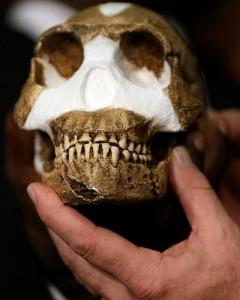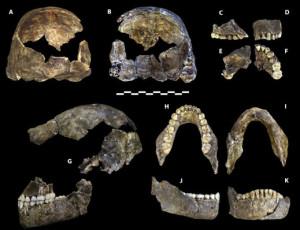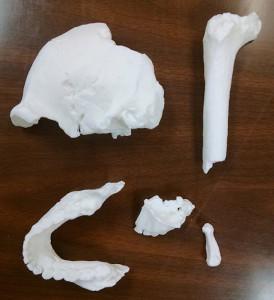 In 2013, a group of paleoanthropologists led by Lee Berger embarked on a three-week exploration of a South African cave. Known as the Rising Star Expedition, the exploration resulted in some groundbreaking discoveries, most notably the discovery of bones belonging to previously unknown human ancestor Homo naledi. On September 10, 2015, the discovery was officially announced, and a model of the hominin’s skull was presented – a realistic 3D printed model almost indistinguishable from a real fossil. Then came another announcement that thrilled scientists and teachers: the research team had scanned and uploaded the fossils, and made them freely available on MorphoSource so that anyone could print their own replicas of Homo naledi.
In 2013, a group of paleoanthropologists led by Lee Berger embarked on a three-week exploration of a South African cave. Known as the Rising Star Expedition, the exploration resulted in some groundbreaking discoveries, most notably the discovery of bones belonging to previously unknown human ancestor Homo naledi. On September 10, 2015, the discovery was officially announced, and a model of the hominin’s skull was presented – a realistic 3D printed model almost indistinguishable from a real fossil. Then came another announcement that thrilled scientists and teachers: the research team had scanned and uploaded the fossils, and made them freely available on MorphoSource so that anyone could print their own replicas of Homo naledi.
“The Rising Star Expedition’s opening up of information so soon after discovery is unprecedented and very, very welcome,” says Forbes.com contributor Kristina Killgrove, an anthropologist from the University of West Florida. “In the past, fellow researchers and teachers would have to wait multiple years — and pay hundreds of dollars — to get a cast of the new fossil. And wait many more years for all the data to be opened up.”
Within twelve hours of the announcement, Killgrove had printed five pieces of Homo naledi on her lab’s MakerBot 3D printer.
The Rising Star Expedition was notable not only for its discoveries but for the many ways in which it was made accessible to the public. The team live-blogged and tweeted the entire time they were on-site, so that anyone interested could easily follow along at home. Now the availability of the fossil files for 3D printing means that anyone with access to a 3D printer can study them up-close without needing a museum membership.
The expedition’s files are not the first that have been made available to the public, but never before have such a large number been so instantly and freely accessible. Public access of fossil scans is still very new, and comes with its own challenges, but Killgrove hopes that the Rising Star Expedition will set an important new precedent.
“There are unfortunately only a small number of 3D models available,” she says. “Why small? Well, not all fossil remains have been digitized, not all researchers want them digitized, and not all companies that make and sell casts want them digitized and made freely available.”
When she was approached by colleagues wanting to know how she printed her fossils, Killgrove decided to compile a list of as many available printable fossils that she knew of. She notes that several other sites, such as the Smithsonian, maintain collections of 3D printed fossils that have not, at this time, been made available to be downloaded or printed. With the publicity that the Rising Star Expedition has generated, however, it will be surprising if other organizations do not follow suit, opening the doors to anthropological study wider than they’ve ever been opened before.
Subscribe to Our Email Newsletter
Stay up-to-date on all the latest news from the 3D printing industry and receive information and offers from third party vendors.
Print Services
Upload your 3D Models and get them printed quickly and efficiently.
You May Also Like
Reinventing Reindustrialization: Why NAVWAR Project Manager Spencer Koroly Invented a Made-in-America 3D Printer
It has become virtually impossible to regularly follow additive manufacturing (AM) industry news and not stumble across the term “defense industrial base” (DIB), a concept encompassing all the many diverse...
Inside The Barnes Global Advisors’ Vision for a Stronger AM Ecosystem
As additive manufacturing (AM) continues to revolutionize the industrial landscape, Pittsburgh-based consultancy The Barnes Global Advisors (TBGA) is helping shape what that future looks like. As the largest independent AM...
Ruggedized: How USMC Innovation Officer Matt Pine Navigates 3D Printing in the Military
Disclaimer: Matt Pine’s views are not the views of the Department of Defense nor the U.S. Marine Corps Throughout this decade thus far, the military’s adoption of additive manufacturing (AM)...
U.S. Congress Calls Out 3D Printing in Proposal for Commercial Reserve Manufacturing Network
Last week, the U.S. House of Representatives’ Appropriations Committee moved the FY 2026 defense bill forward to the House floor. Included in the legislation is a $131 million proposal for...



































